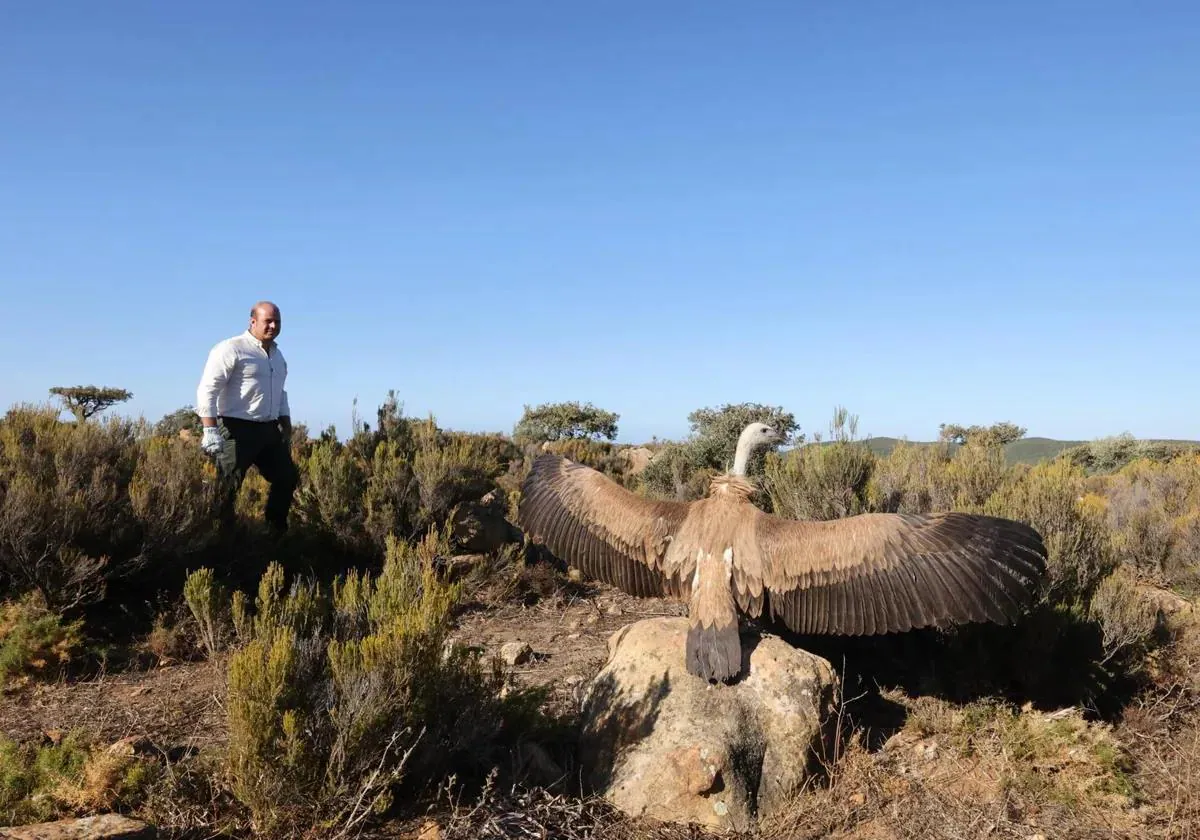Birds of prey return to skies above Andalucía after recuperation at rescue centre
The Junta has released seven griffon vultures, an eagle owl and a goshawk, all protected species, from the CREA Dunas de San Antón
La Voz
Cadiz
Saturday, 5 October 2024, 12:28
Nine birds of prey were released into the wild last Monday in Los Alcornocales natural park in the Cadiz province municipality of Alcalá de los Gazules. The group consisted of seven griffon vultures, an eagle owl and a goshawk and they were released in the area of El Picacho.
As part of the release event the regional government's provincial representative for the environment in Cadiz, Óscar Curtido, mentioned "the efforts made by the Andalusian government, through the regional ministry for sustainability and environment, aimed at recovering protected species and supporting their reintroduction into the natural environment, based on a firm commitment to the conservation of fauna."
Curtido also referred to "the extraordinary richness of the protected natural areas of our province, which serve as habitat for a diverse avifauna, in a land in which we are committed to the protection of biodiversity."
Of the birds released the seven griffon vultures are juveniles that were admitted to the Centro de Recuperación de Especies Amenazadas (CREA) Dunas de San Antón based in El Puerto de Santa María during the months of July and August. All of them were suffering from malnutrition from which they recovered well during their stay in these facilities. This was an intake of young and inexperienced vultures, which is a fairly common occurrence during these birds' migratory passage through Cadiz province. The vultures were found by members of the public in the Sierra de Cádiz and Campo de Gibraltar and reported to the Junta's environmental officers so they could be rescued and later transferred to CREA's rescue centre.
Following this release of seven griffon vultures, that makes a total of 56 griffon vultures that have been brought alive to CREA Dunas de San Antón so far this year, with 34 making a full recovery. These 34 have now been returned to their natural environment while the rest remain at the centre pending a full recovery and, hopefully, their release back into the wild.
As to the eagle owl also released on Monday, this bird of prey came from Sanlúcar de Barrameda. When it was admitted to CREA in August it was also malnourished. The goshawk arrived at these facilities only in September from Arcos de la Frontera having suffered an eye injury.
All the released birds have been ringed for scientific purposes. In addition to this metal ring the vultures have also been tagged with a PVC ring that can be read from a distance, which will help to track the movements of these protected birds.
The work of CREA Dunas de San Antón
CREA Dunas de San Antón is part of a network of centres created by the regional government to recover the region's endangered species. Here veterinary care is provided to the protected wildlife that enters these facilities. Special attention is given to any endangered species in order to rehabilitate as many as possible for release back into the wild without lessening their chances of thriving. Currently the total number of animals admitted is around 970 and, if the carers continue at the estimated rate, the total number of animals cared for could reach 1,200 by the end of the year.
The pattern of animal arrivals at CREA is clearly seasonal, depending on the movements and ecological processes of each species. The time for the greatest number of admissions is in spring into summer, coinciding with the breeding period and greater feeding activity. In terms of fauna groups, the most numerous is that of birds, accounting for over 80% of admissions, followed by mammals, reptiles and amphibians.
CREA also plays an important role in the good progress made in the ongoing campaign to protect and conserve the rare bird of prey known as Montagu's Harrier as part of the Steppe Bird Conservation Programme. Apart from the rescue work, CREA also works out in the field, locating nests and colonies and mediating with the agricultural sector with a view to the harvest to minimise harm to wildlife. CREA is currently caring for two Egyptian vultures and an osprey. Both are threatened species, the former classed as endangered and the latter as vulnerable. There are also examples of several other protected species such as tawny owls, more griffon vultures, kestrels, eagle owls, black kites and more at the centre.
